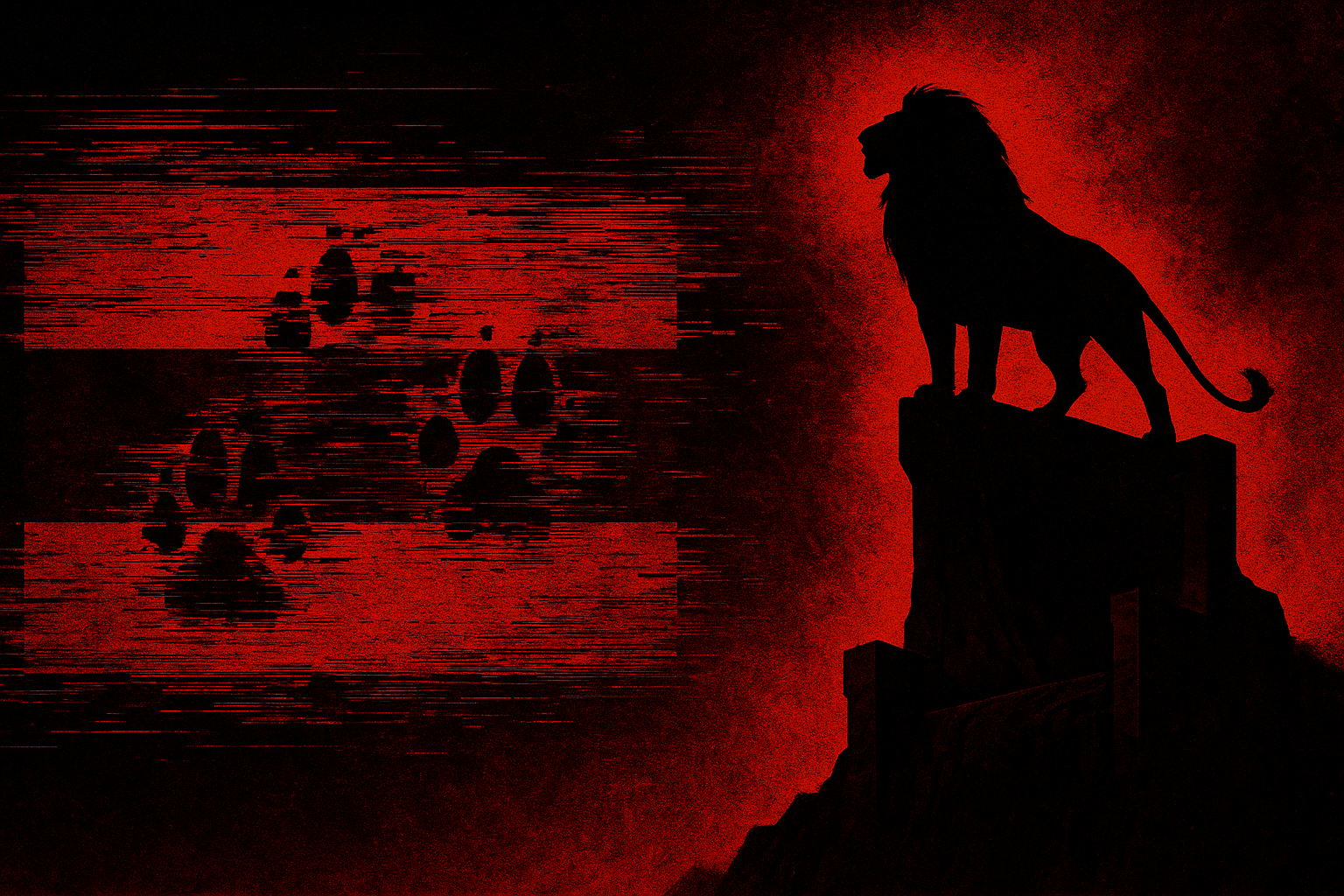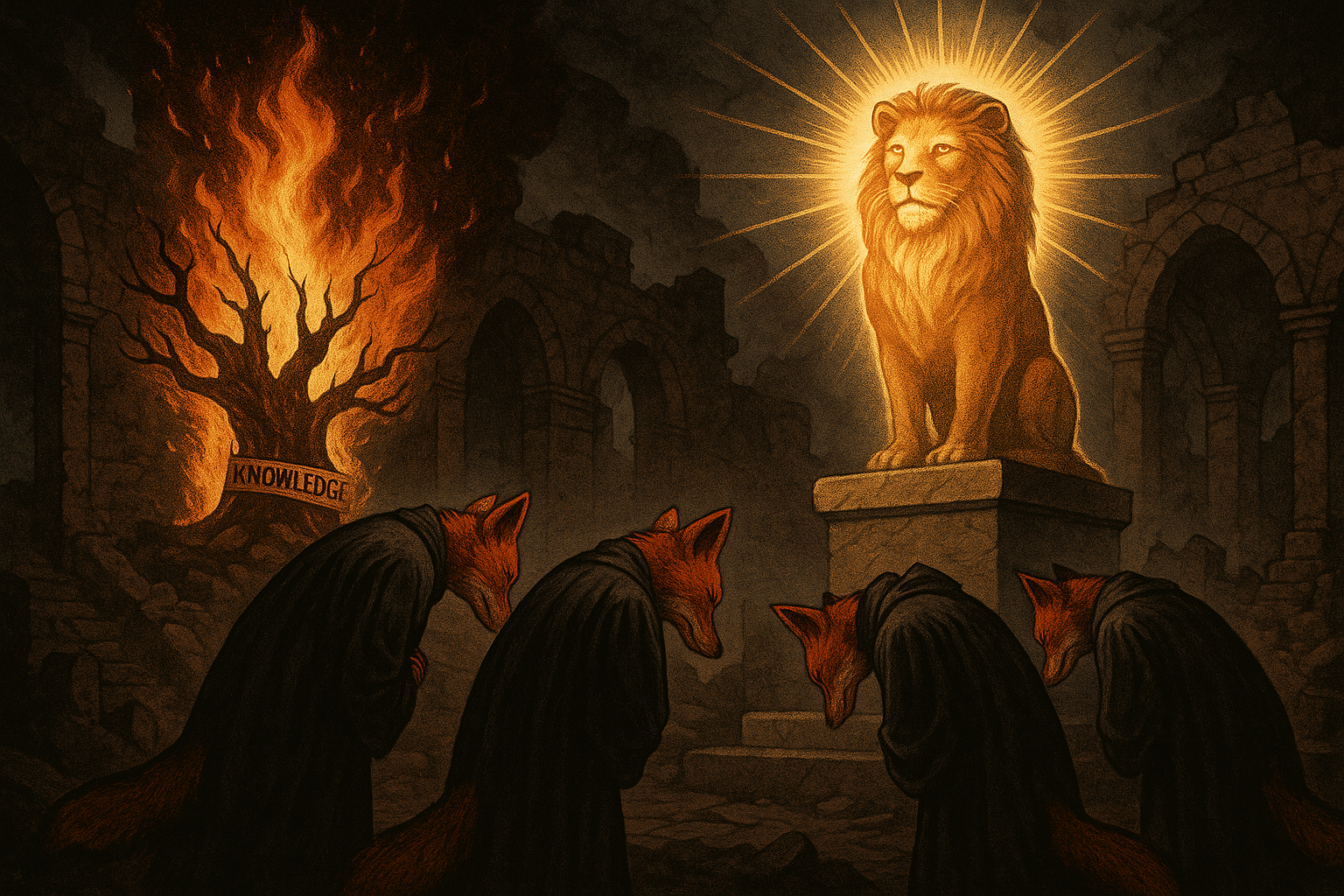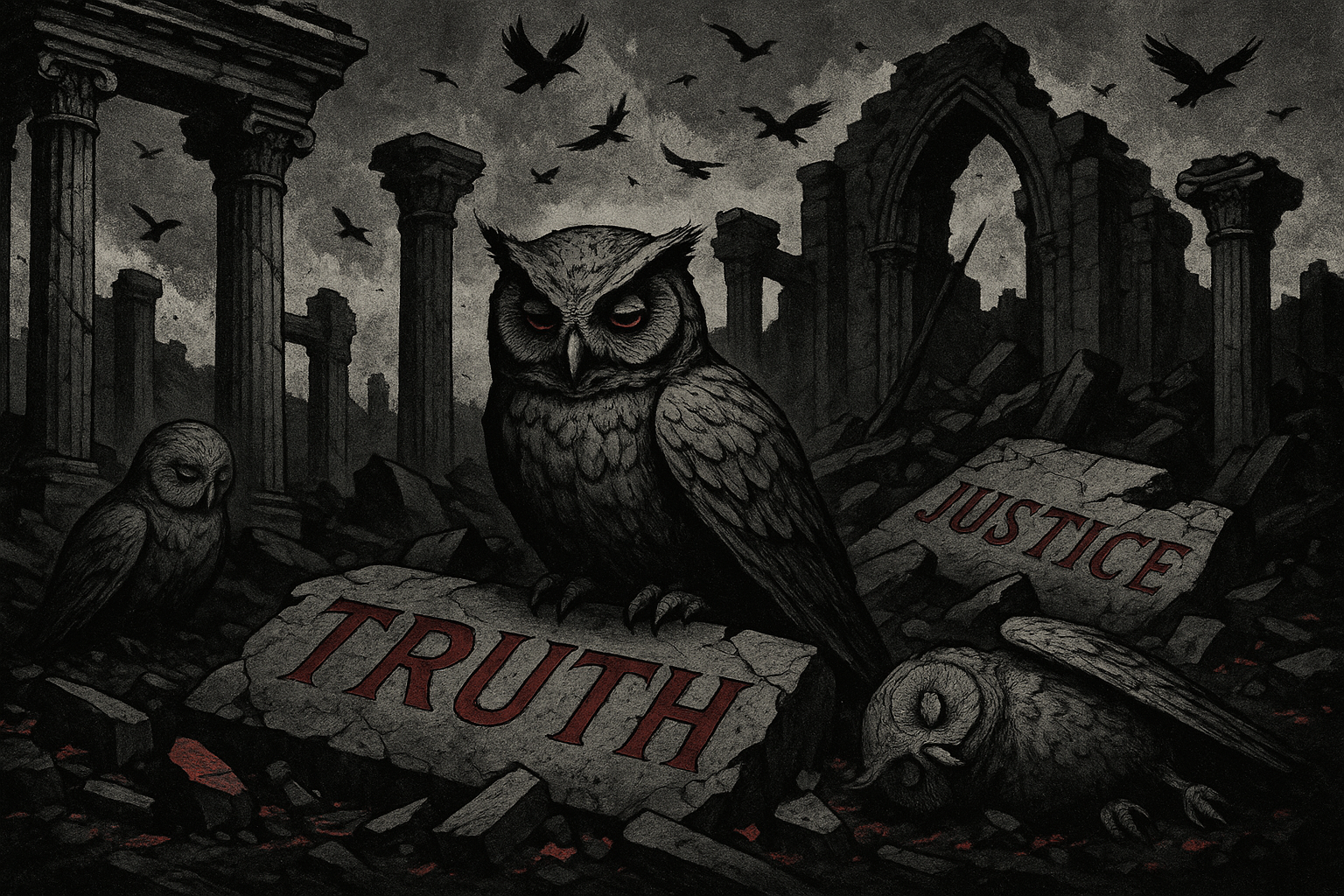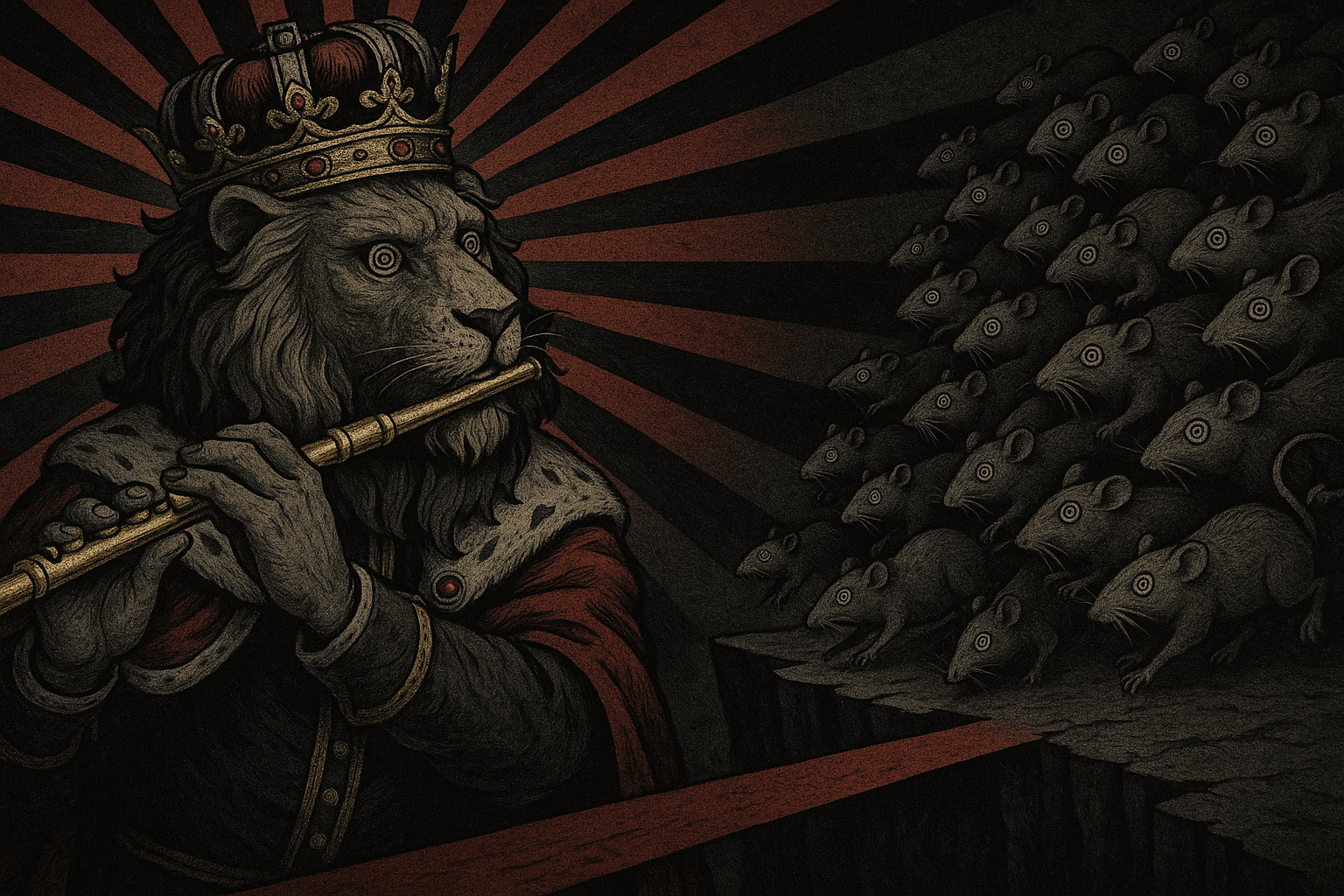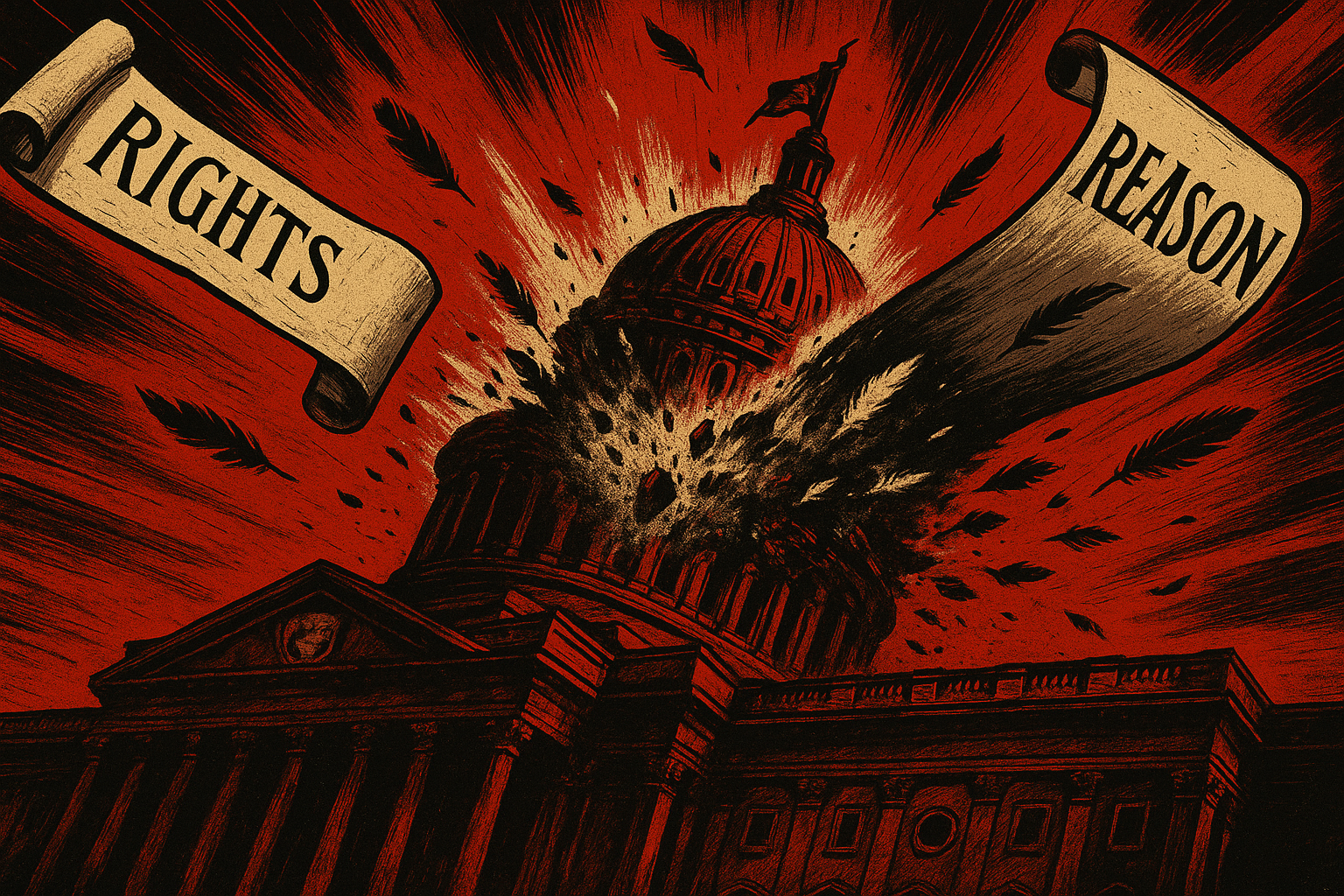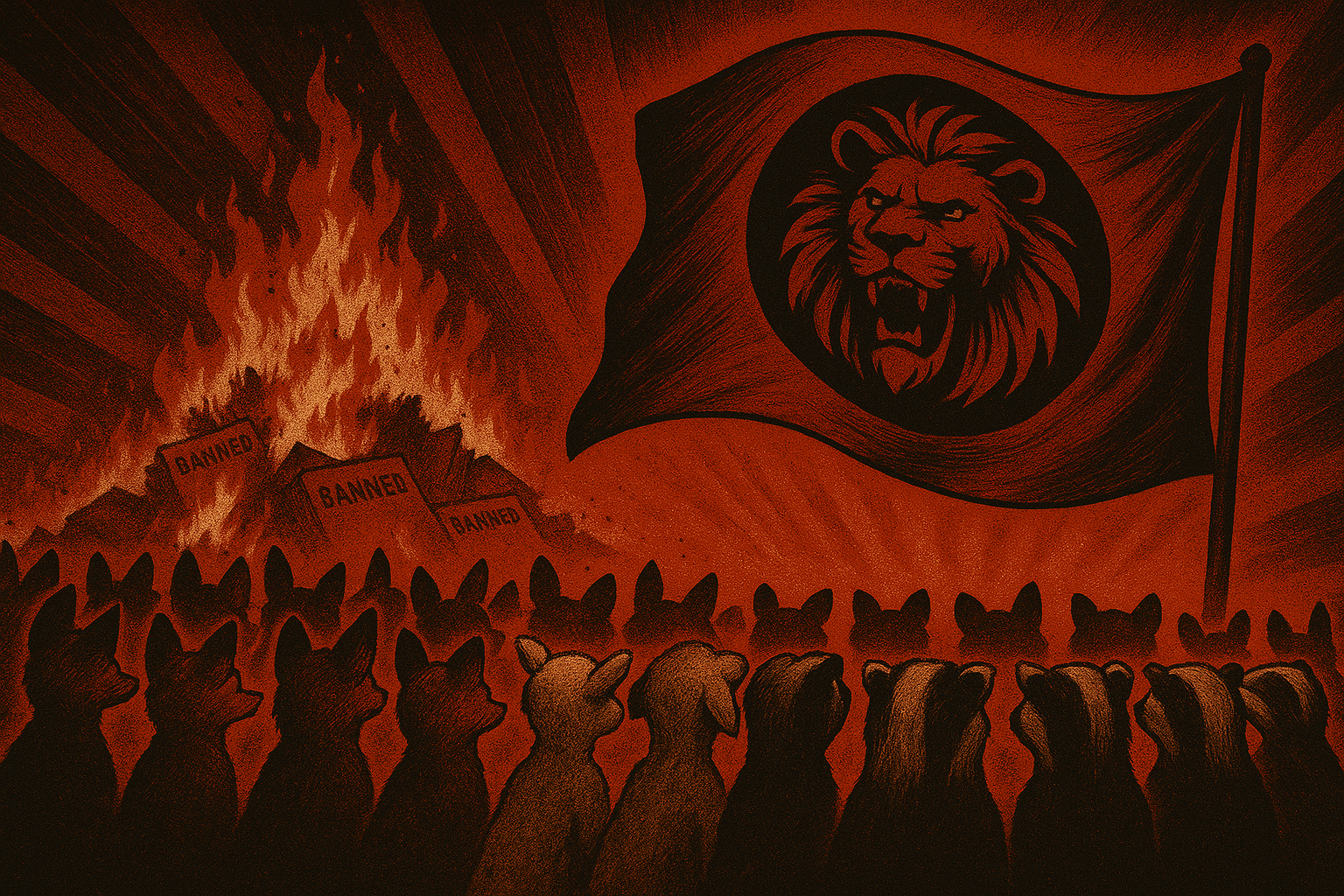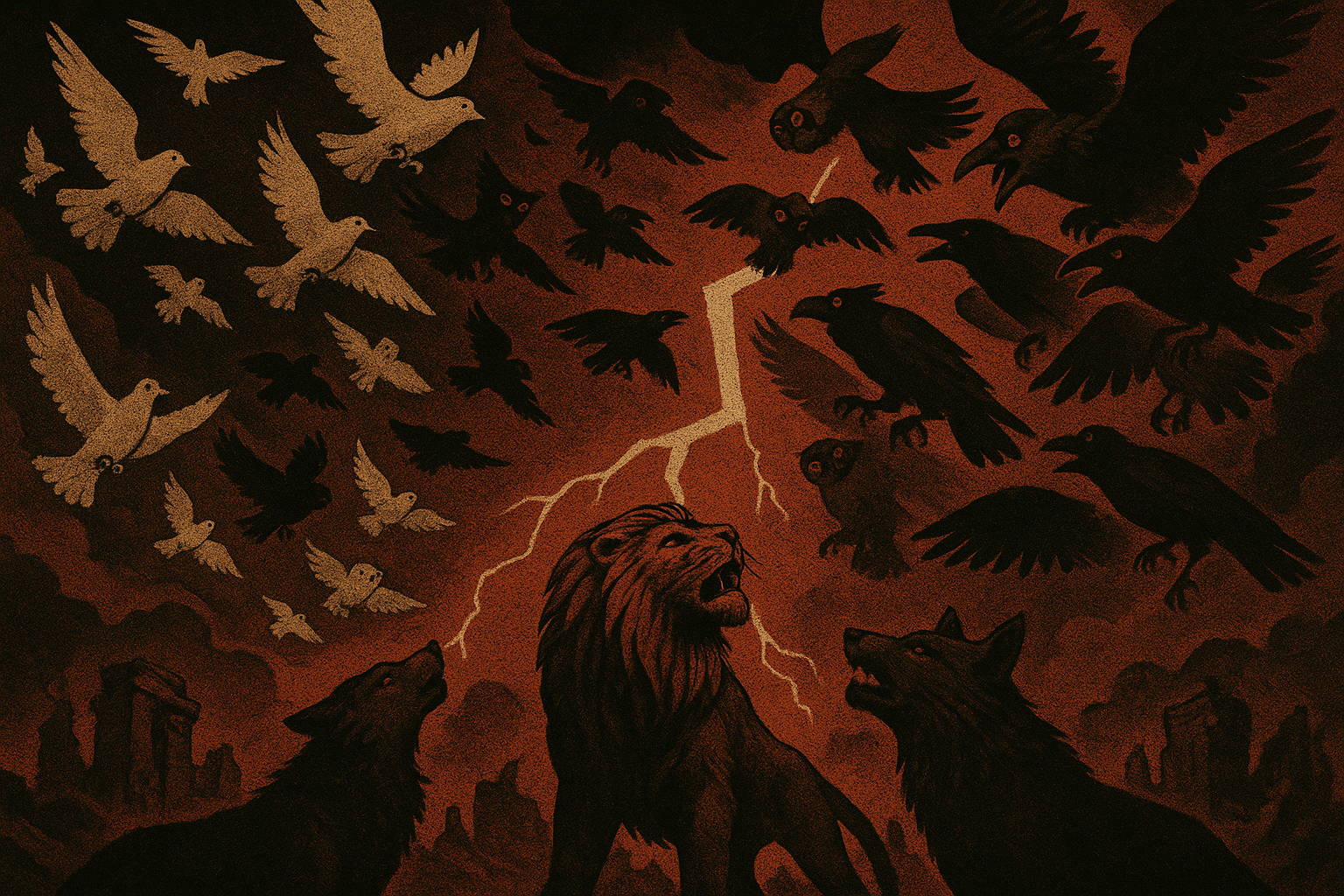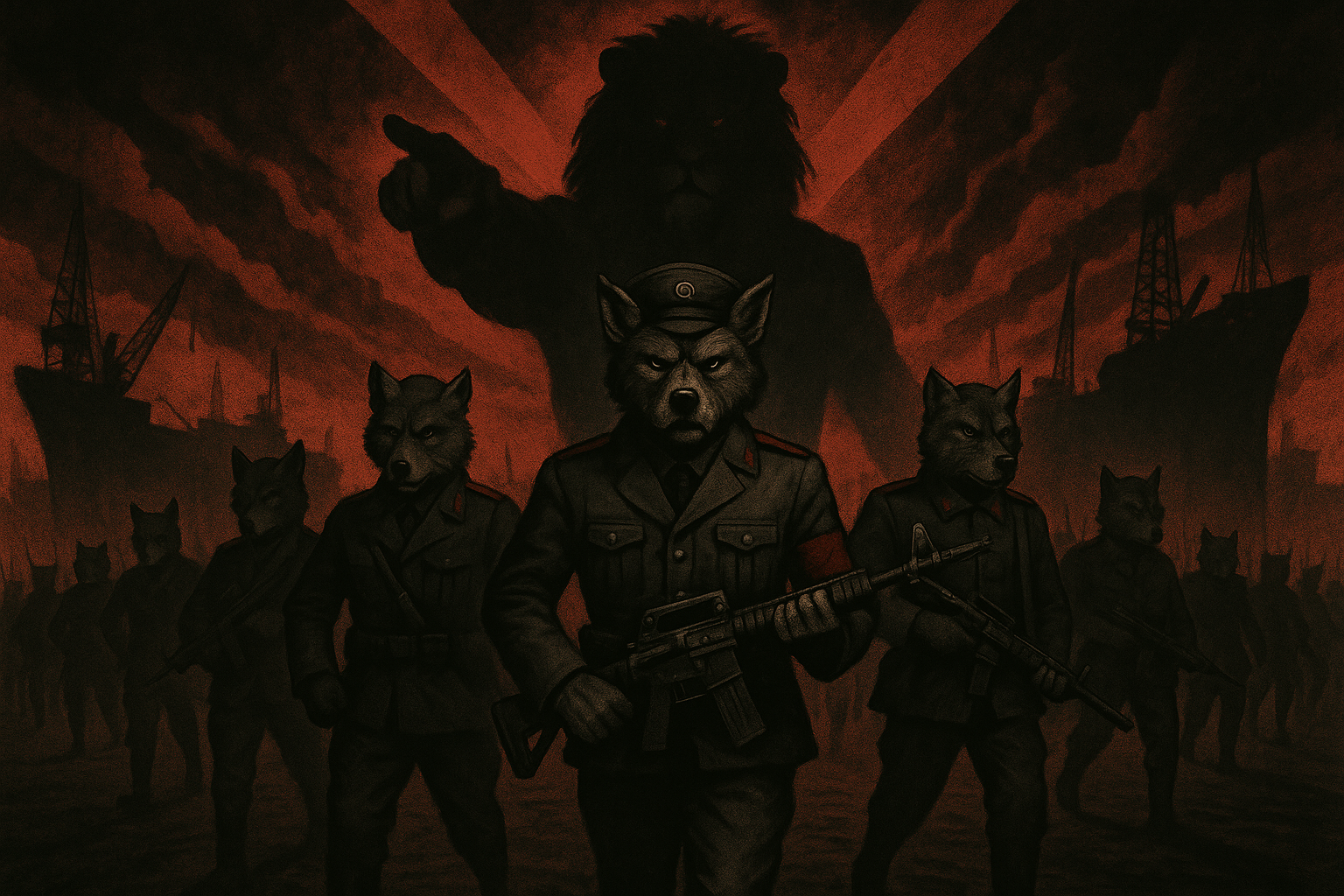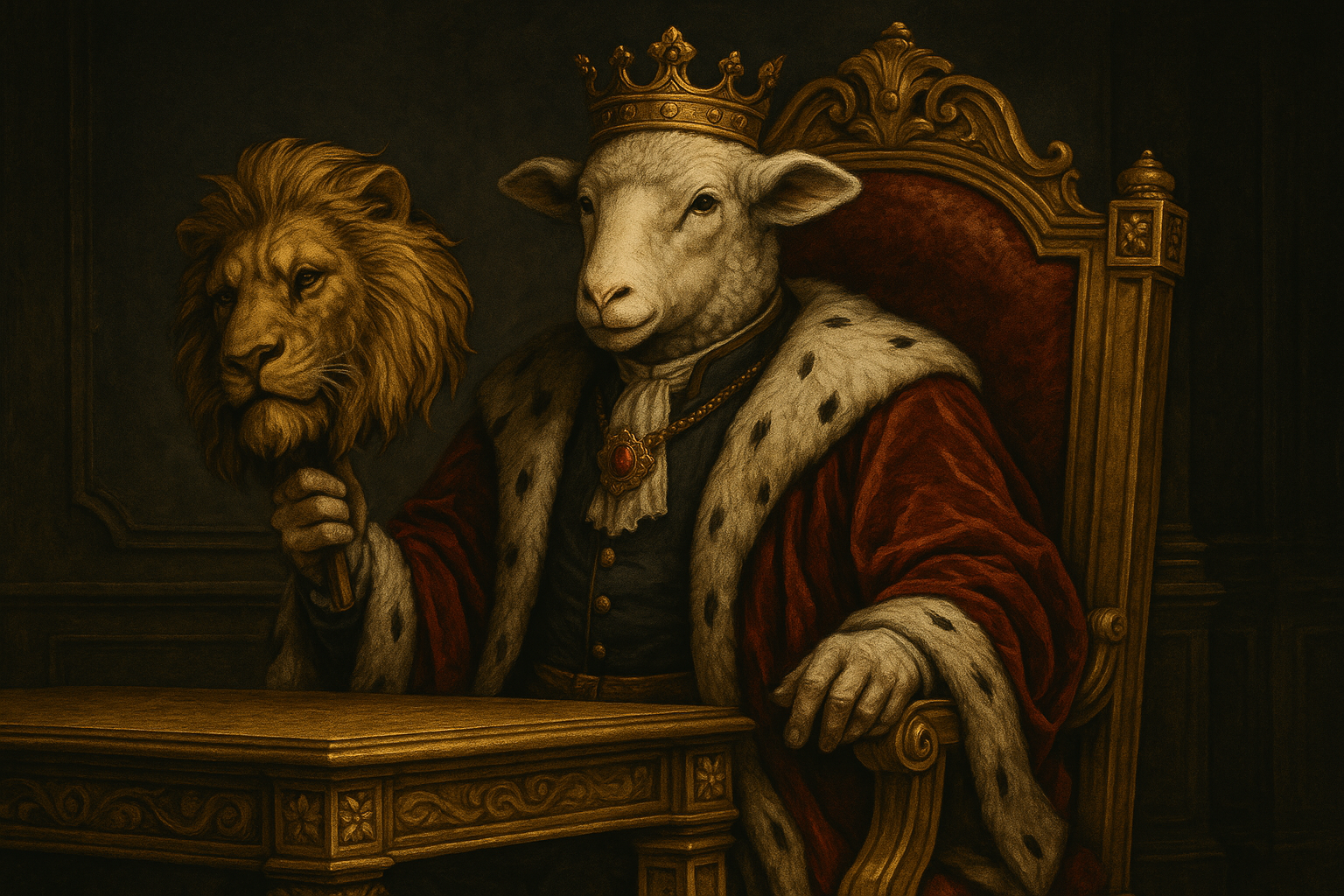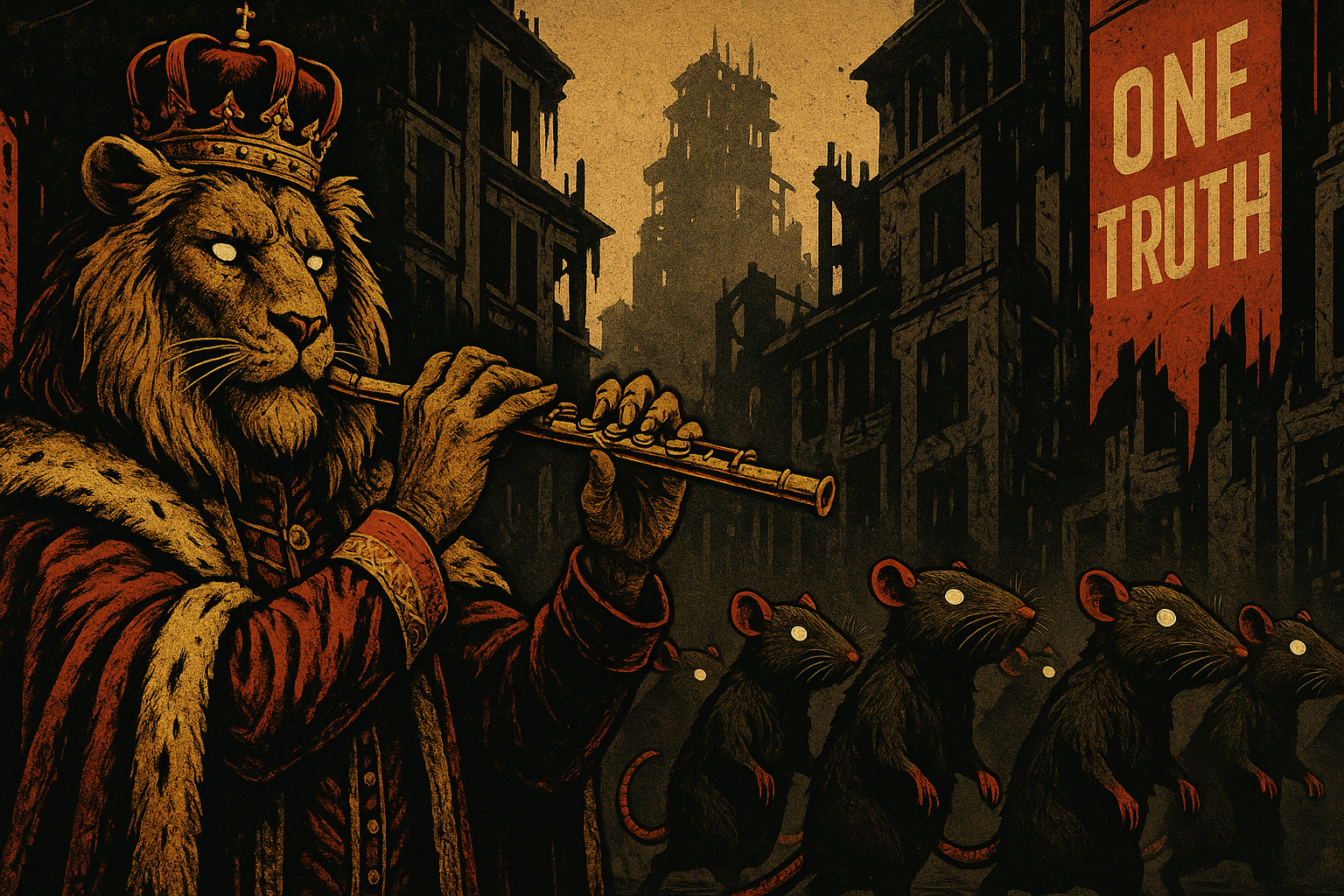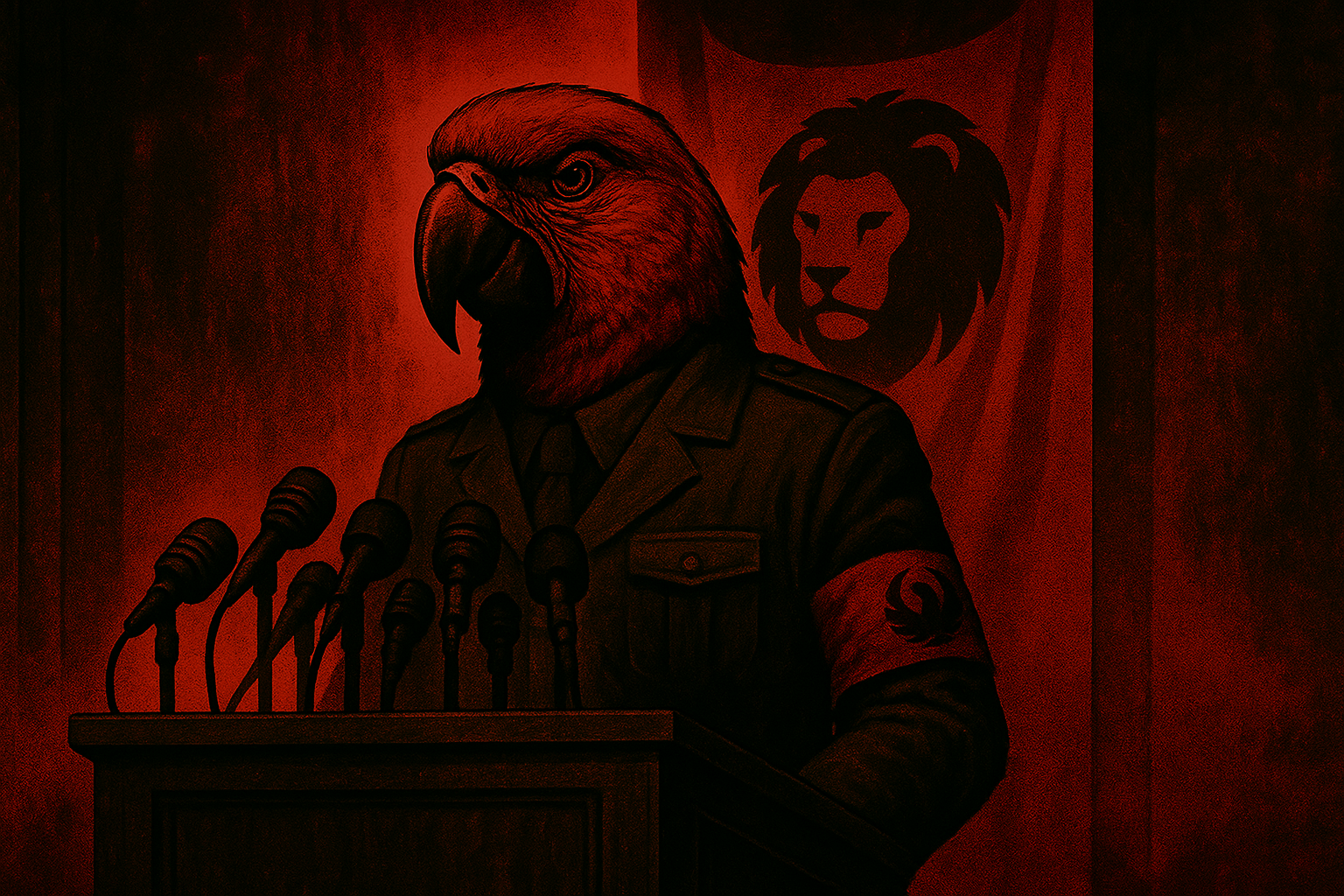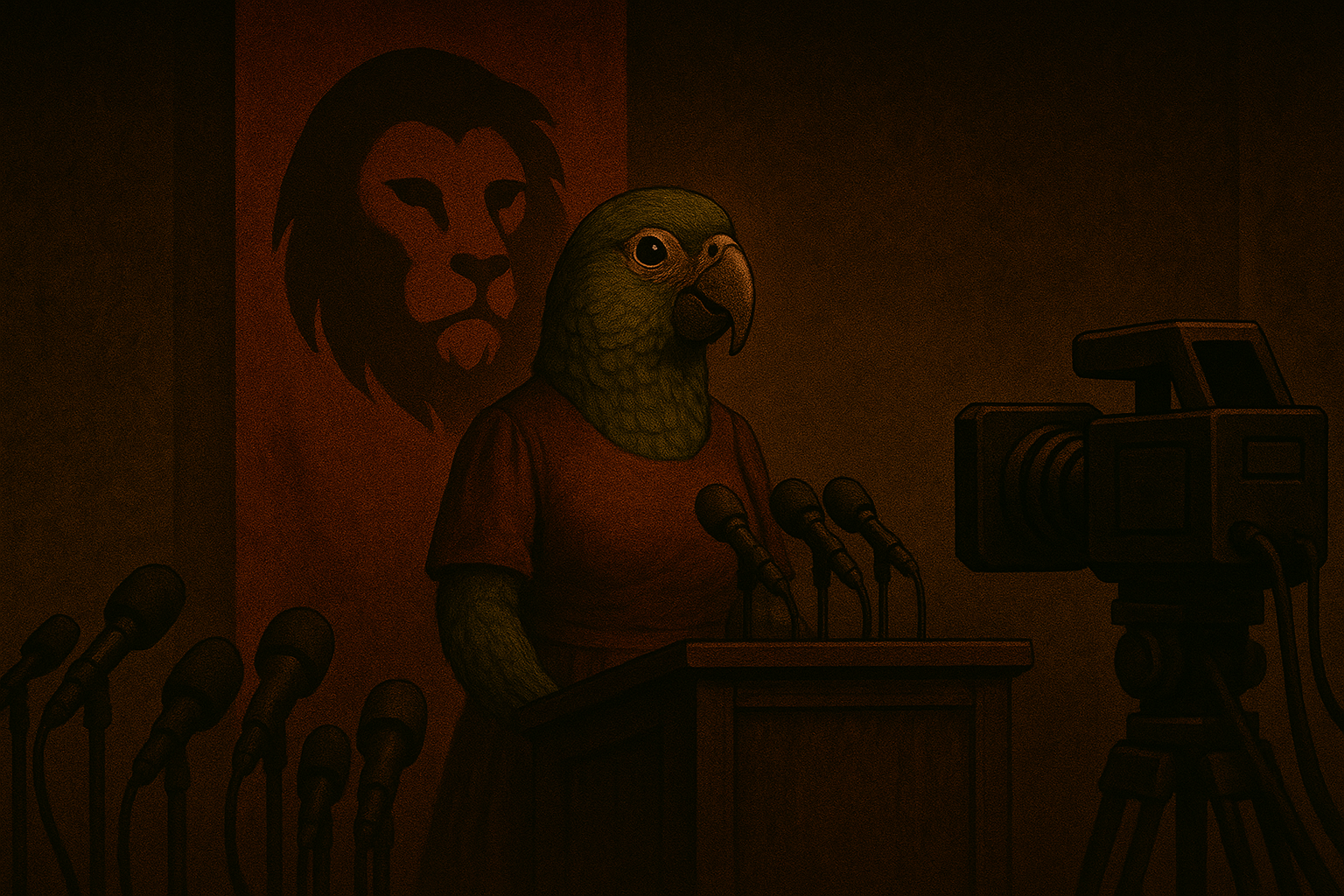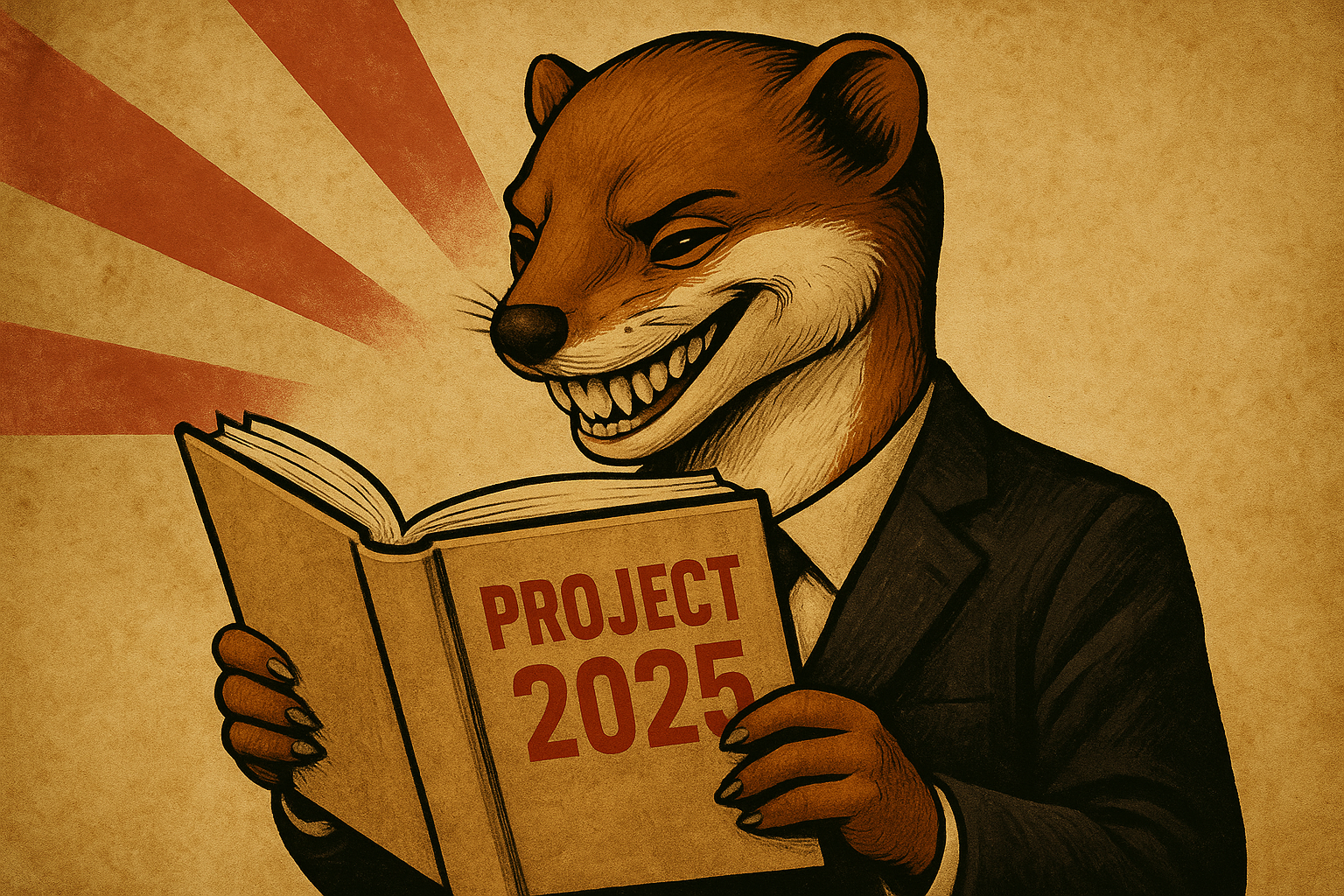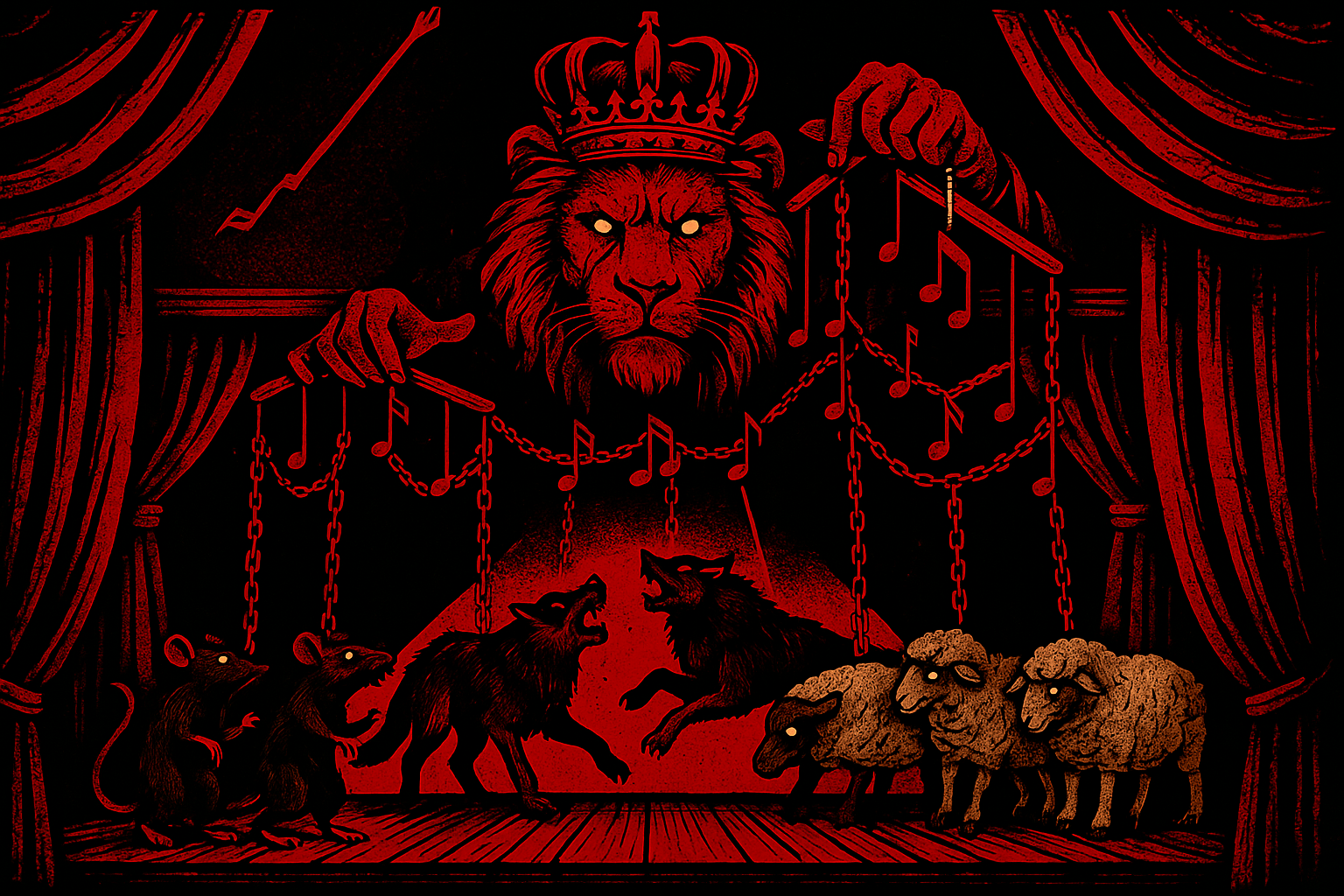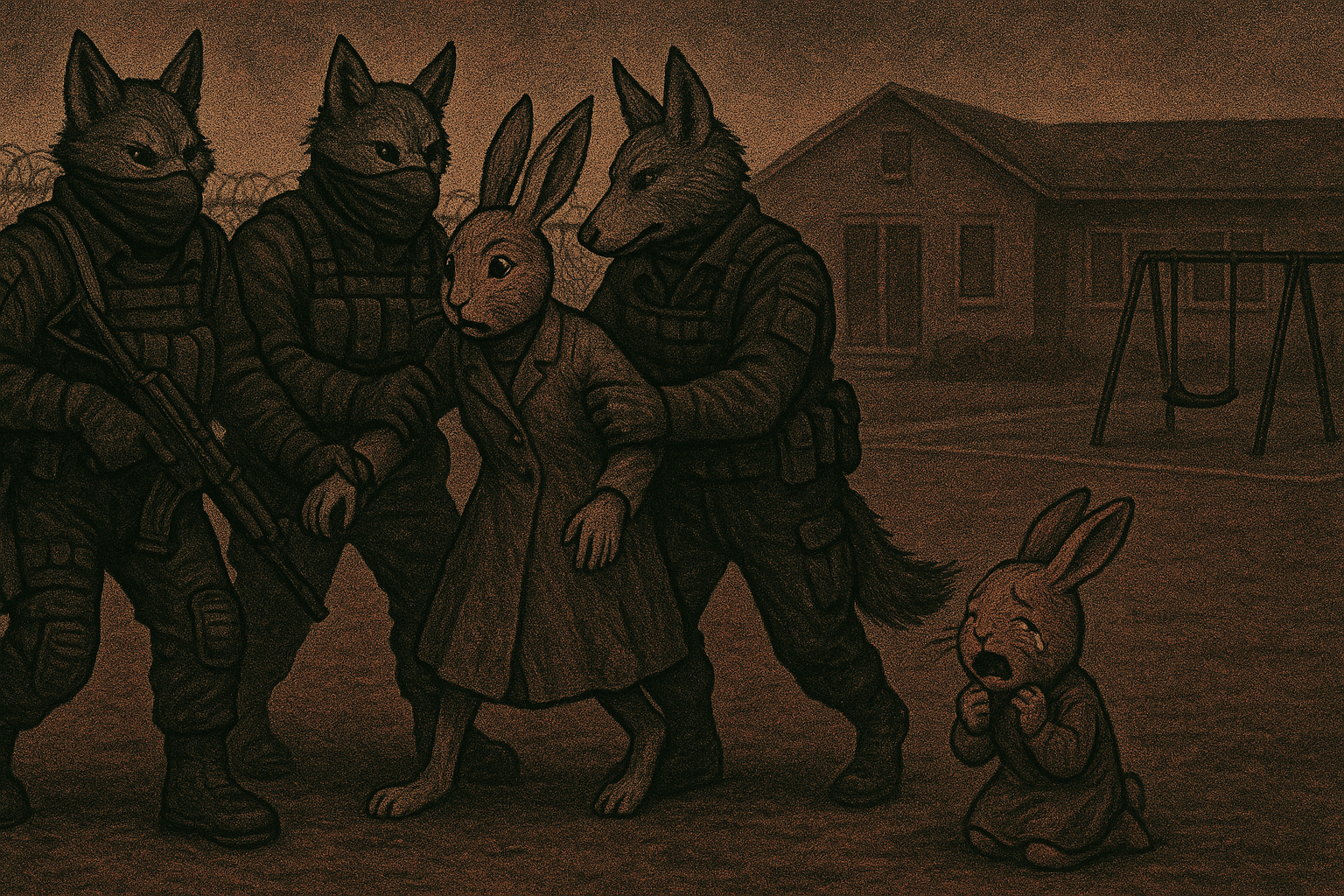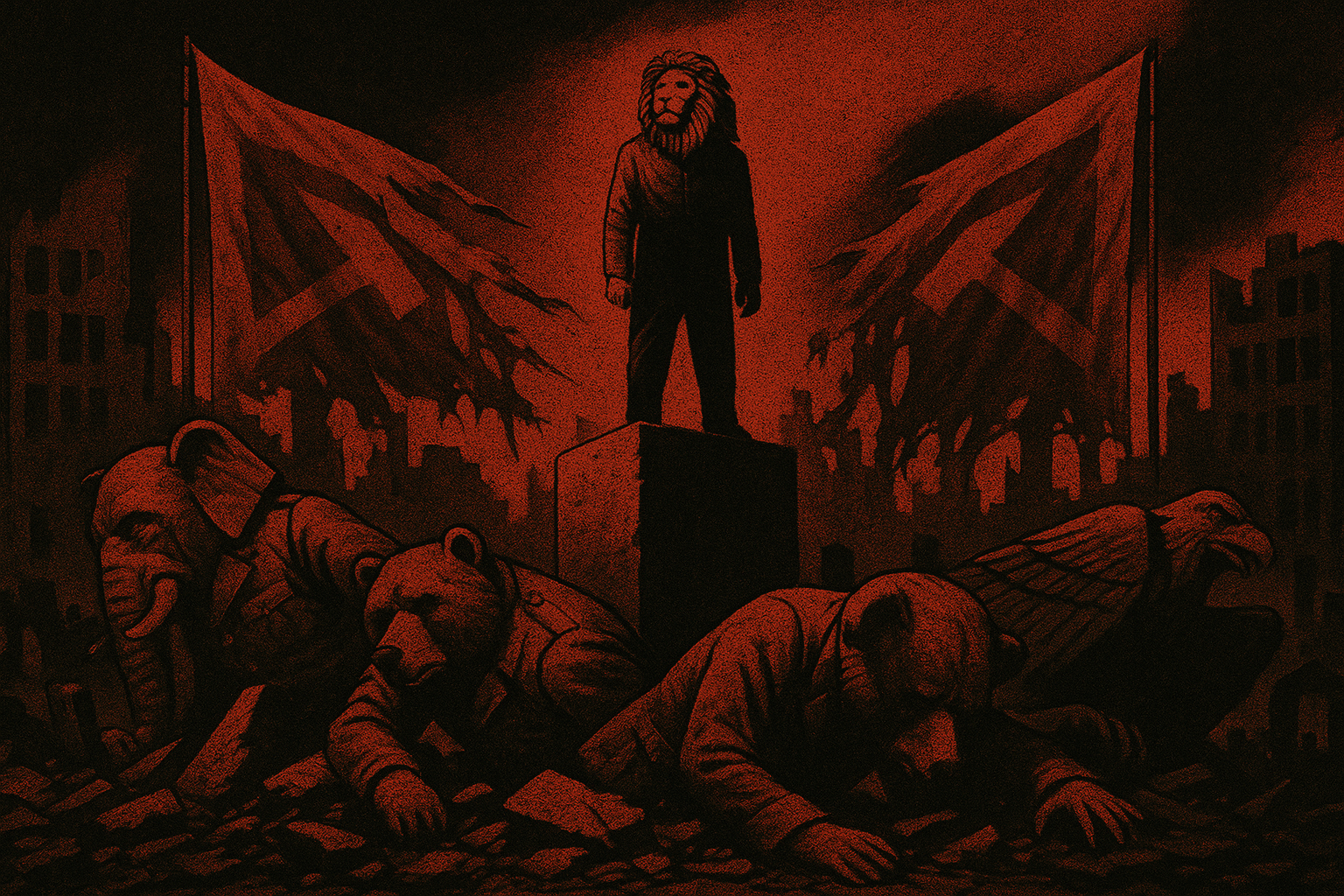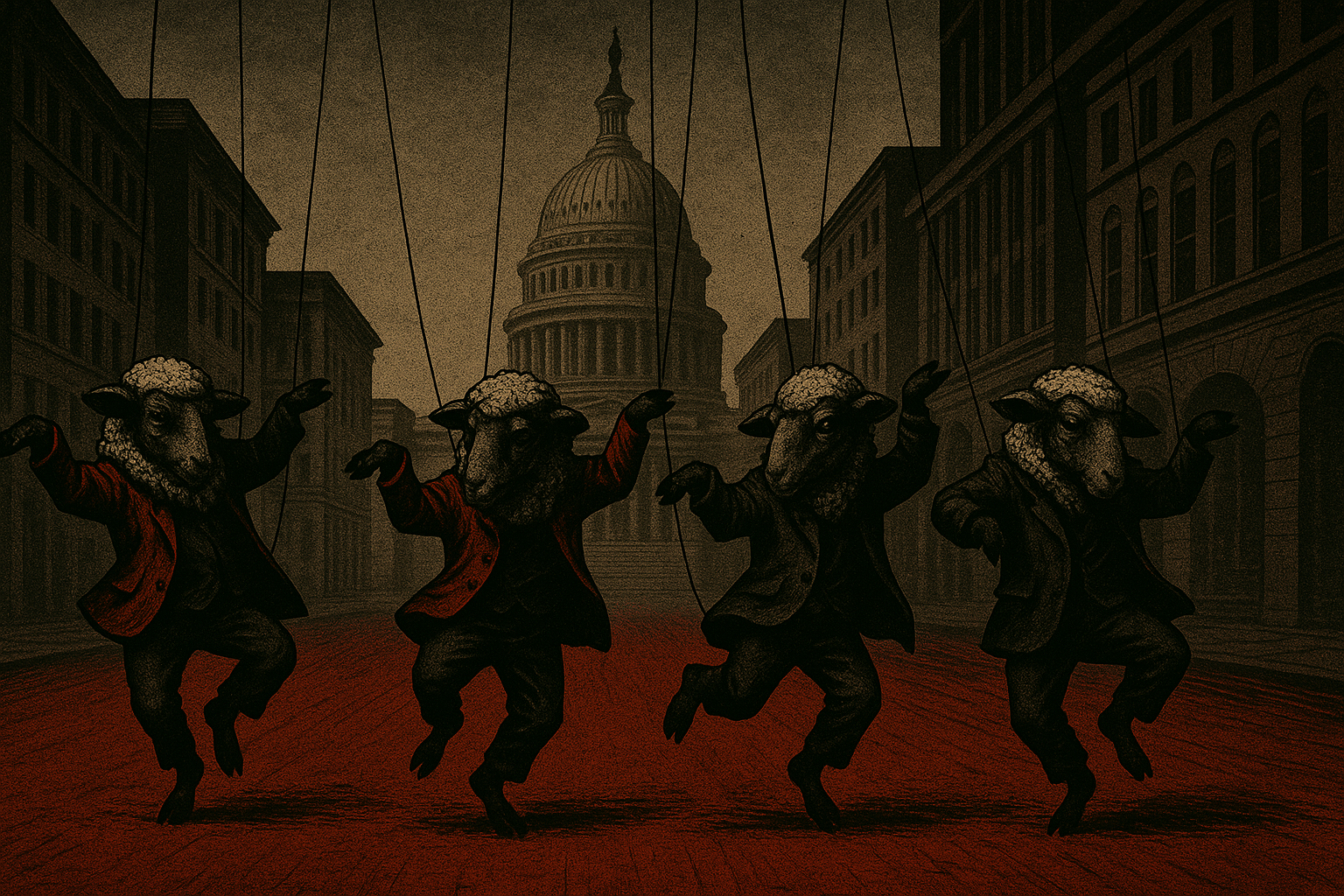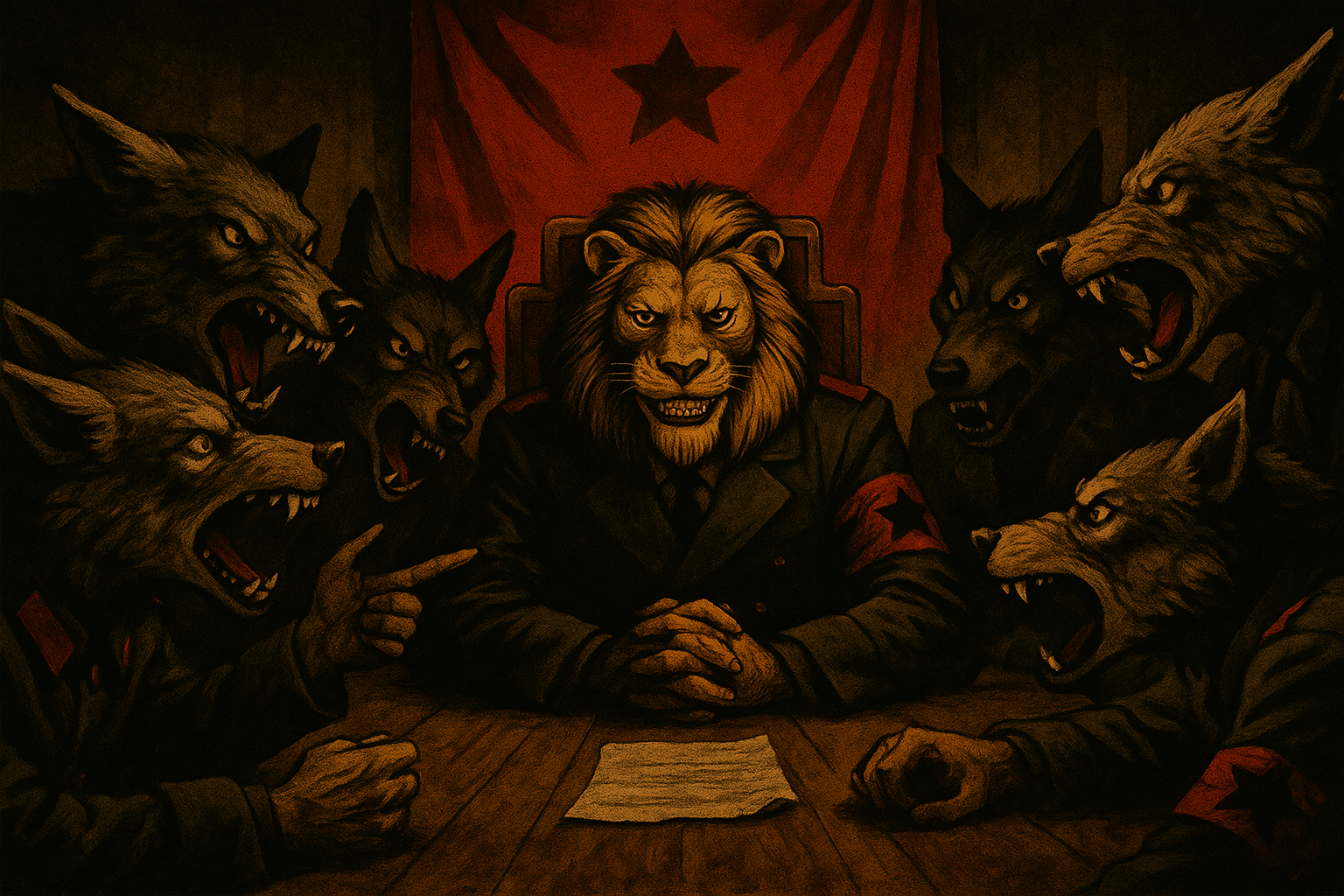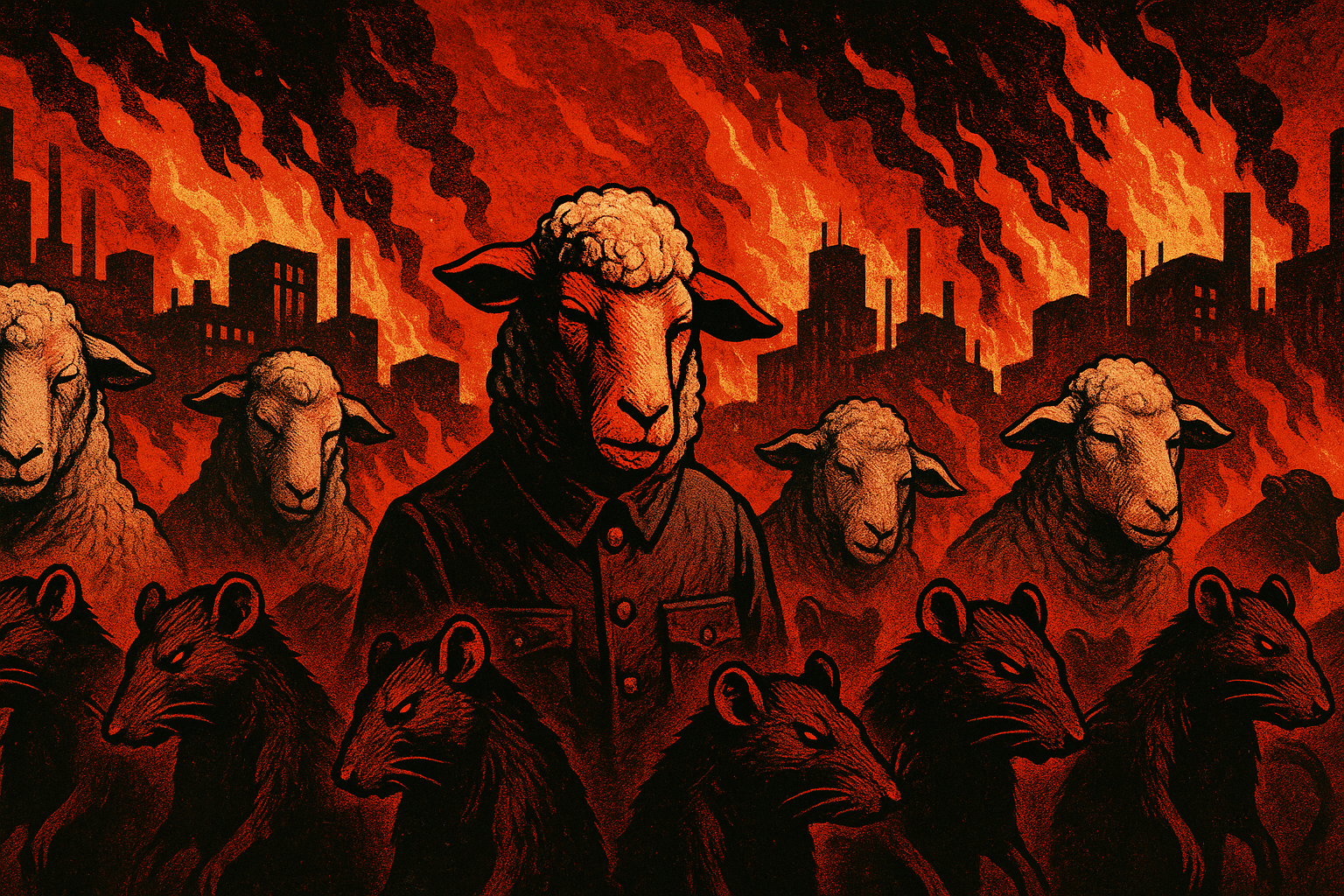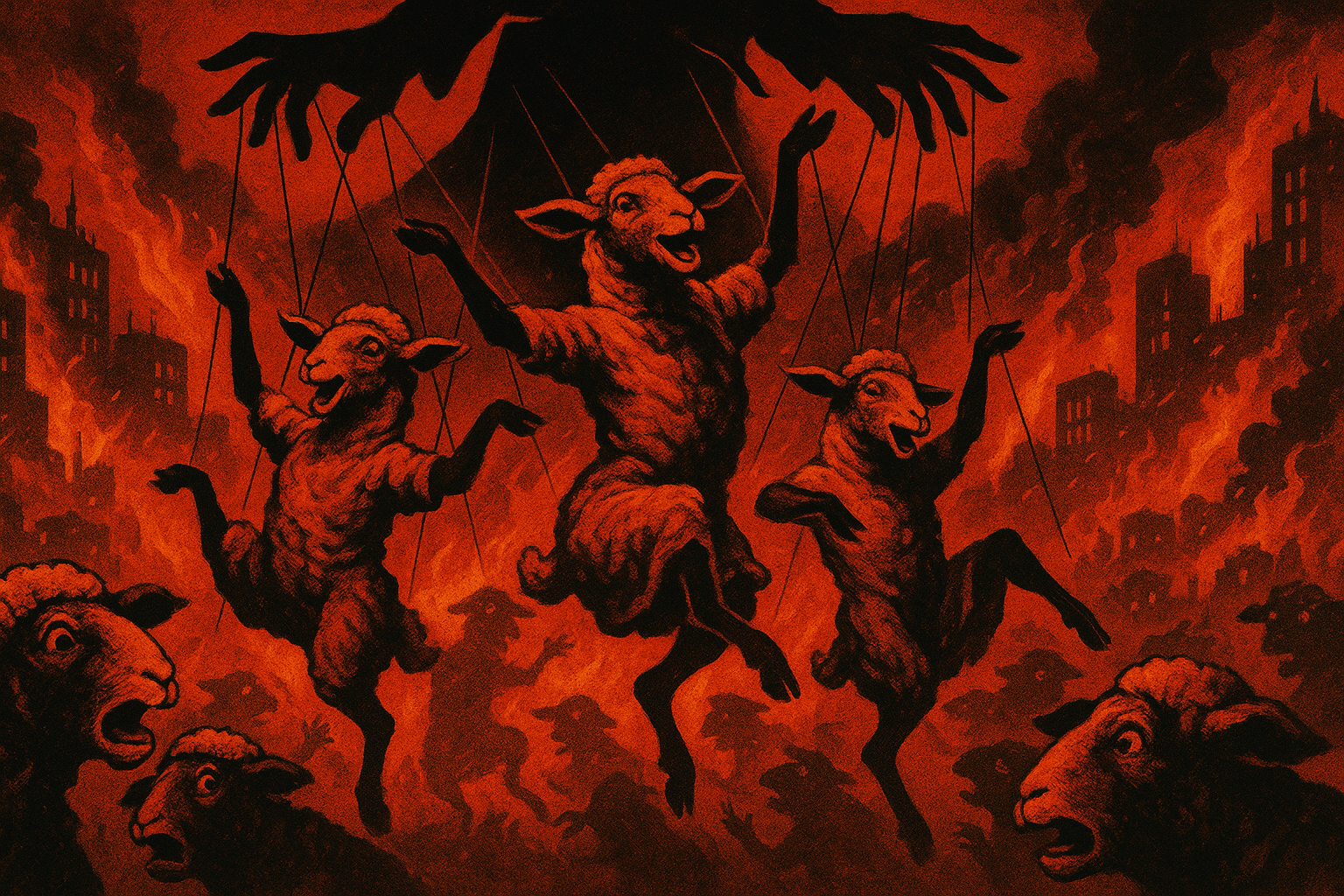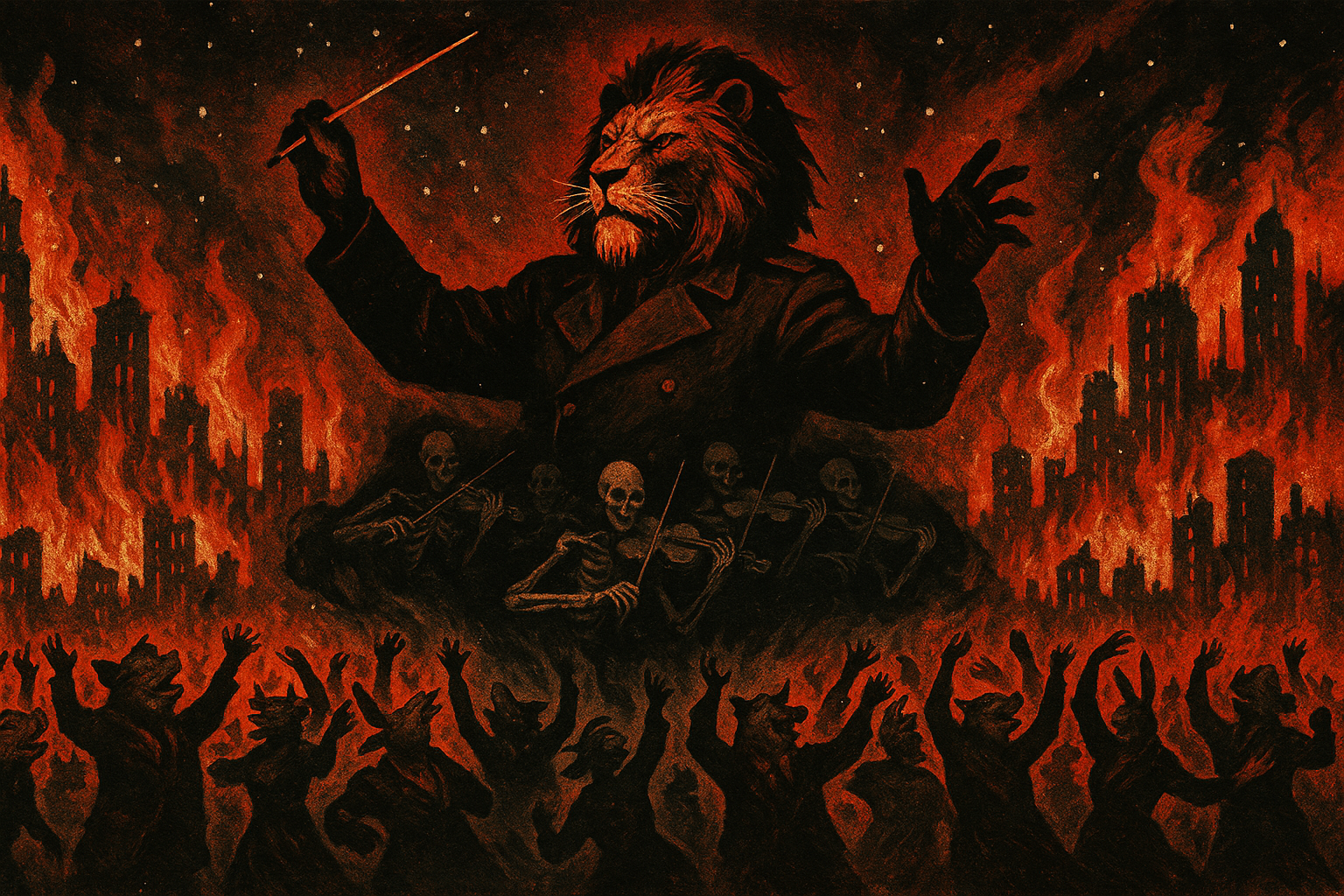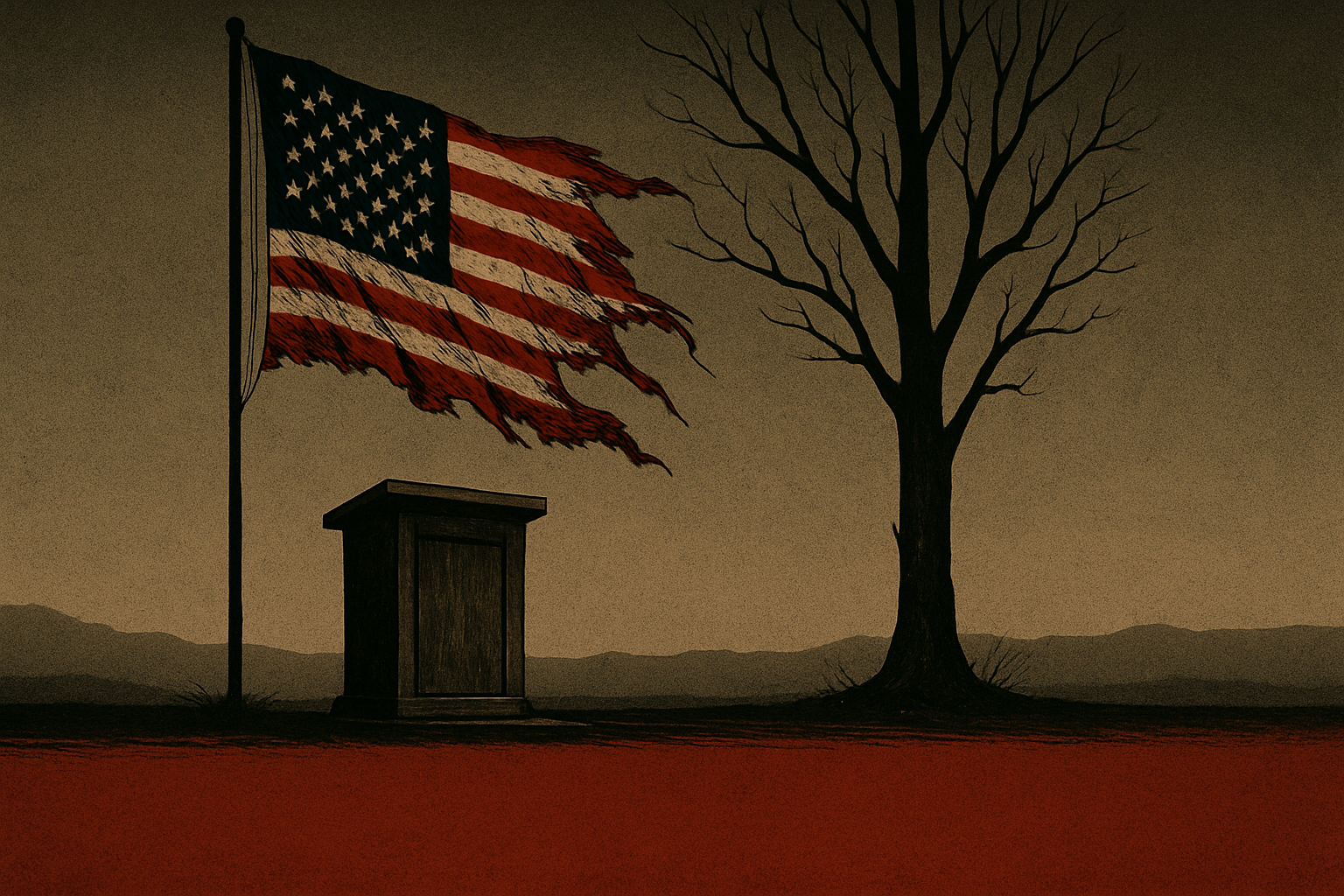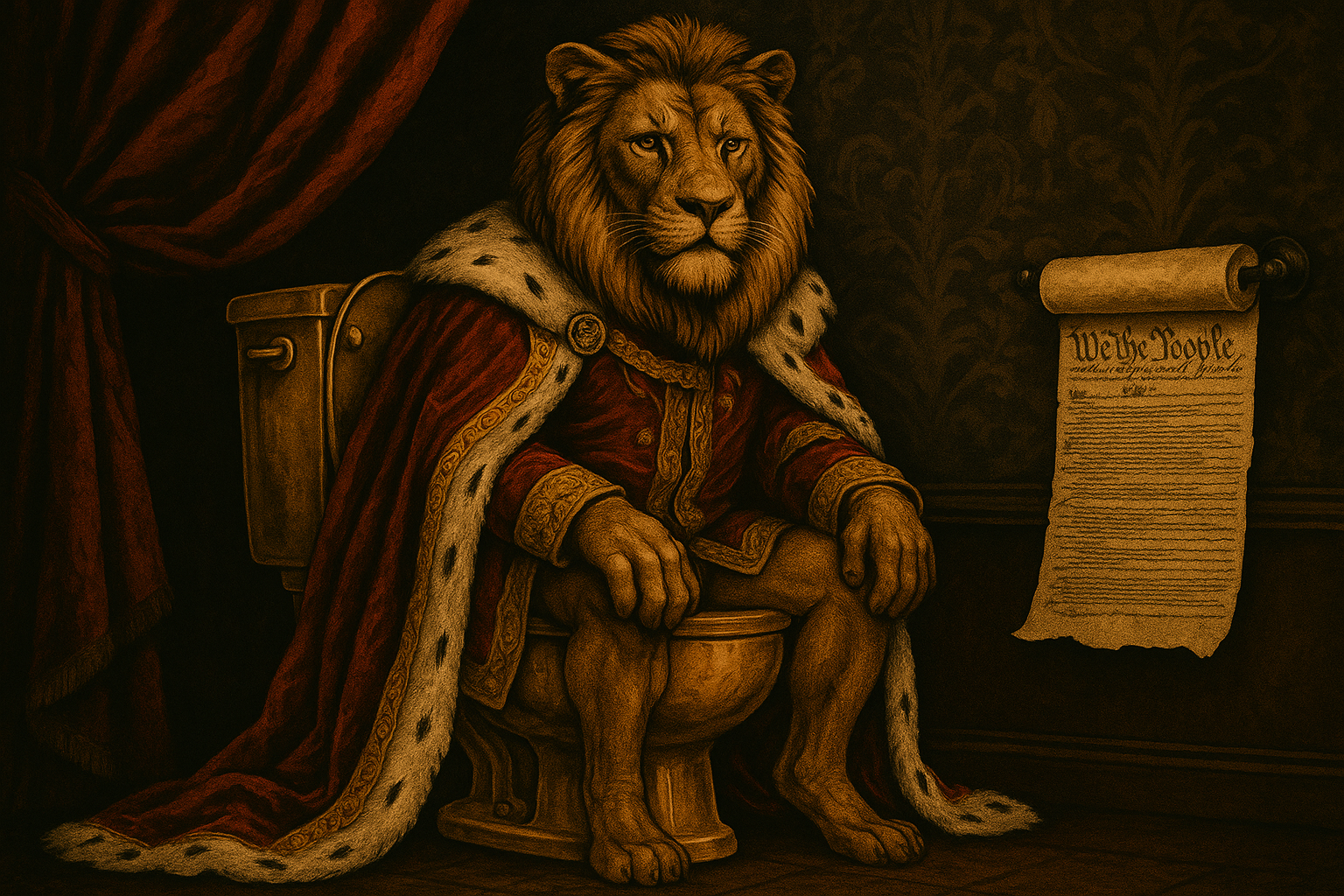Style used is a fierce blend of graphic novel realism and propaganda brutalism, rooted in a dystopian vision where anthropomorphic animals serve as both tyrants and rebels. It’s a visual symphony echoing Orwell’s “Animal Farm” rewritten in blood and iron. Here are the defining traits:
Color Palette: Blood and Ash
Red and Black dominate—symbols of control, defiance, and decay.
Occasional use of faded whites or grays to suggest erosion, surveillance, or lost purity.
Colors are not decorative—they’re ideological. Red bleeds authority or uprising; black shrouds secrecy, hierarchy, or death.
Character Design: Anthropomorphic Iconoclasts
Animal figures are dressed in rigid political uniforms: epaulettes, armbands, steel-plated badges.
Facial expressions are minimal, yet eyes glow or glare—mirrors of allegiance or resistance.
Anatomies are realistic, muscular, often inspired by 20th-century military portraiture.
Characters hold posture like statues—either as deified leaders or beaten survivors.
Composition: Centralized Authority
Layouts often follow a poster-style, centralized framing—focal points stare you down like dictators.
Vertical dominance—cliffs, towers, flags—underscore hierarchy and surveillance.
Scenes are designed with moody lighting and hard shadows that split the frame with ideological tension.
Backgrounds are sparse, but textured, like old paper soaked in memory and propaganda.
Textures & Effects: Grain, Decay, Glitch
Every piece has a grainy, tactile finish, reminiscent of worn posters or old newsreels.
Occasional glitch effects convey digital decay, censorship, or collapsing systems.
Flags ripple with rigid geometry, cliffs crumble with orchestral weight, and every surface feels stained by history.
Thematic Core: Control vs. Rebellion
Each image is a page torn from an unwritten political graphic novel.
Animals are both the oppressors and the oppressed.
The mood is relentless—no hope without sacrifice, no power without rot.
“Symphony of Destruction” is one of Megadeth’s most iconic tracks, released in 1992 as the lead single from their album Countdown to Extinction. Written by frontman Dave Mustaine and produced alongside Max Norman, the song blends politically charged lyrics with a heavy, accessible metal sound.
The lyrics depict a political leader manipulated by unseen forces, using the metaphor of the Pied Piper to illustrate how the masses blindly follow authority. Inspired in part by The Manchurian Candidate, it critiques how easily power can corrupt and how citizens can become complicit. Mustaine encourages listeners to seek truth and think for themselves.
Musically, it’s anchored by a memorable riff and a tight structure, thanks to Norman’s production changes. The track was a commercial breakthrough, helped by a controversial music video that was partially censored by MTV. It became a global hit and remains a live favorite, especially in countries like Argentina where fans chant the band’s name in unison.
The song’s legacy is cemented through frequent covers, video game features, and its status as Megadeth’s gateway into mainstream recognition.
